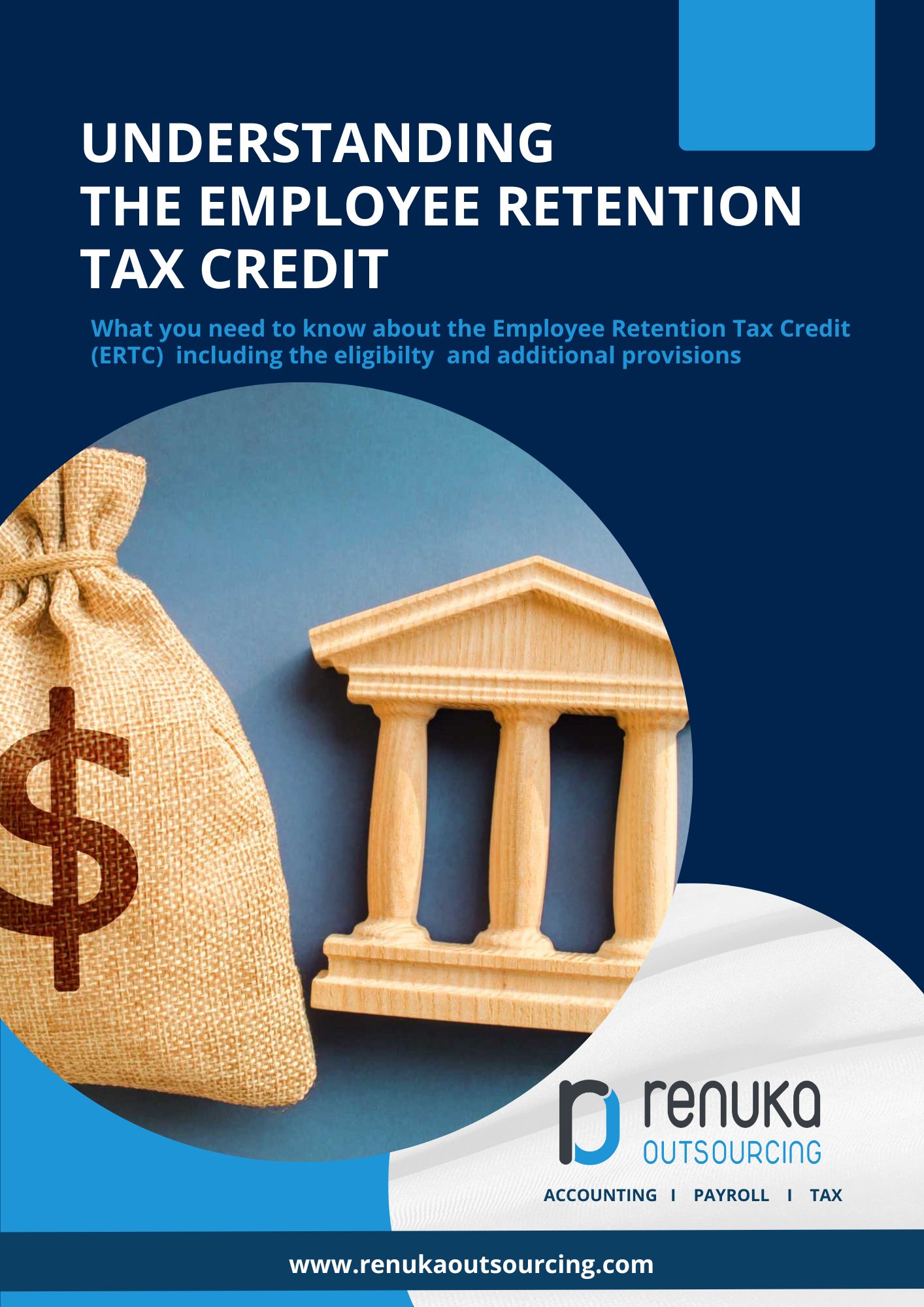
Office 3333 Lee Parkway, Suite 600, Dallas, TX 75219, USA



The Employee Retention Tax Credit is a broad-based refundable tax credit created by The Coronavirus Aid, Relief and Economic Security (CARES) Act to encourage businesses to keep their employees on their payroll during the coronavirus pandemic season of 2020.
ERTC gives eligible employers and smack to medium size businesses the means to receive up to 50% of qualifying wages at first, but was reduced to $10,000 per employee, with a minimum credit of $5,000 for wages received from March 13,2020, through December 31, 2021. By 2021, the percentage of qualified wages has increased to 70%. Each employee’s wage maximum has been increased from $10,000 annually to $10,000 per quarter.
The credit is available to all eligible businesses of any size that pay eligible wages to employees; nevertheless, businesses with fewer employees and less than 500 employees must meet additional conditions in various sections of 2020 and 2021.
In general, a business qualifies if gross revenue in a fiscal quarter may be less than 50% of the same calendar quarter in 2019. They will no longer be eligible if their quarter’s total revenues hit 80% in the fiscal quarter succeeding the same calendar quarter in 2019.
Firms must have been impacted by forced closures or prevent the spread or have had a 20% drop in total revenue in the preceding quarter compared to the prior quarter in 2019.
If you’re a new business, the IRS allows you to use gross revenues from your first quarter of business as a reference for any quarterly for which authorities don’t really have 2019 numbers because you’re not yet open for business.
The credit is half of the qualified wages, up to a maximum of $10,000. It covers payments made between March 13, 2020, and December 31, 2020. If a company had a little more than 100 employees on average during 2019, the criteria of acceptable pay changes.
If the employer had 100 or fewer employees on average in 2019, then the credit is based on wages paid to all employees whether they actually worked or not. In other words, even if the employees worked full time and got paid for full time work, the employer still gets the credit.
If the employer had more than 100 employees on average in 2019, then the credit is allowed only for wages paid to employees who did not work during the calendar quarter.
In both cases, “wages” includes not just cash payments but also a portion of the cost of employer provided health care.
Employers can be immediately reimbursed for the credit by reducing the amount of payroll taxes they have withheld from employees’ wages that they are required to deposit with the Treasury.
The government is allowing billions in economic stimulation through the Employee Retention Tax Credit program, yet hundreds of company owners will let most of this money go unclaimed.
May be your banks, payroll agency, bookkeeper and your own tax professional have given you inconsistent advice but don’t allow rumours to keep you from getting your refund!
#happyoutsourcing
Published By : Aanchal Garg on 20 Feb 2023 11:08:52am

The Employee Retention Tax Credit is a broad-based refundable tax credit created by The Coronavirus Aid, Relief and Economic Security (CARES) Act to encourage businesses to keep their employees on their payroll during the coronavirus pandemic season of 2020.
ERTC gives eligible employers and smack to medium size businesses the means to receive up to 50% of qualifying wages at first, but was reduced to $10,000 per employee, with a minimum credit of $5,000 for wages received from March 13,2020, through December 31, 2021. By 2021, the percentage of qualified wages has increased to 70%. Each employee’s wage maximum has been increased from $10,000 annually to $10,000 per quarter.
The credit is available to all eligible businesses of any size that pay eligible wages to employees; nevertheless, businesses with fewer employees and less than 500 employees must meet additional conditions in various sections of 2020 and 2021.
In general, a business qualifies if gross revenue in a fiscal quarter may be less than 50% of the same calendar quarter in 2019. They will no longer be eligible if their quarter’s total revenues hit 80% in the fiscal quarter succeeding the same calendar quarter in 2019.
Firms must have been impacted by forced closures or prevent the spread or have had a 20% drop in total revenue in the preceding quarter compared to the prior quarter in 2019.
If you’re a new business, the IRS allows you to use gross revenues from your first quarter of business as a reference for any quarterly for which authorities don’t really have 2019 numbers because you’re not yet open for business.
The credit is half of the qualified wages, up to a maximum of $10,000. It covers payments made between March 13, 2020, and December 31, 2020. If a company had a little more than 100 employees on average during 2019, the criteria of acceptable pay changes.
If the employer had 100 or fewer employees on average in 2019, then the credit is based on wages paid to all employees whether they actually worked or not. In other words, even if the employees worked full time and got paid for full time work, the employer still gets the credit.
If the employer had more than 100 employees on average in 2019, then the credit is allowed only for wages paid to employees who did not work during the calendar quarter.
In both cases, “wages” includes not just cash payments but also a portion of the cost of employer provided health care.
Employers can be immediately reimbursed for the credit by reducing the amount of payroll taxes they have withheld from employees’ wages that they are required to deposit with the Treasury.
The government is allowing billions in economic stimulation through the Employee Retention Tax Credit program, yet hundreds of company owners will let most of this money go unclaimed.
May be your banks, payroll agency, bookkeeper and your own tax professional have given you inconsistent advice but don’t allow rumours to keep you from getting your refund!
#happyoutsourcing
Published By : Manpreet kaur on 20 Feb 2023 11:08:52am
Established in 2007, Renuka Outsourcing is an ISO 9001:2015 certified company providing complete outsourcing solutions in accounting, payroll, taxation and back office services to CA, CPA and accounting firms all across the globe.
| USA Toll Free Number | +1-877-778-8516 | |
| India Office Landline | +91-1145657535 | |
| India Hotline | +91-9911550806 | |
| General Enquiry : | info@renukaoutsourcing.com |

| USA Office- | 3333, Lee Parkway, Suite 600, Dallas Texas 75219, USA | |
| India Office- | Suite 301 and 316 Aggarwal Millennium Tower-1, Netaji Subhash Place, Pitampura, Delhi 110034, India |